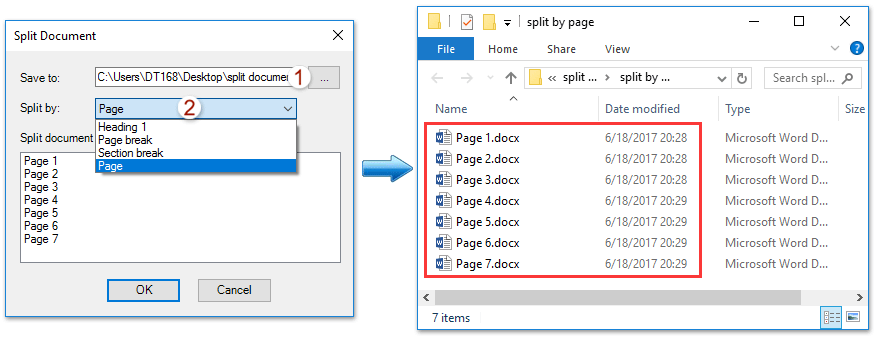

Keep in mind you may need to print the large pages separately if your printer cannot automatically select the paper source according to page size. Make as many sections as needed to accommodate the mixed page sizes. If you want to change the orientation of the page, on the Page Layout tab, click Orientation > Landscape. Change the printer paper source settings, if needed.Under Paper Size, enter width 11″ and height 17″ for a tabloid size page.Changing the paper size of one pageįollow these steps to change the paper size of page 3 (and the orientation, if needed). Double-click in the body of the page to close the footer.

You can now see that pages 1-2 are in Section 1, page 3 is in Section 2, and pages 4-5 are in Section 3. To see your newly created sections, double-click in the footer area to open the footer.
Place the cursor at the beginning of the first sentence on page 4 and repeat step 2. If you want to know the detailed steps to rotate page in Word documents, keep reading this post. So first, you’ll need to create a separate section in the document (even if it’s just for one page), and then you’ll need to change the page layout for that new section to landscape orientation. You can rotate a page with a 'Page Setup' dialog without affecting other pages of the document. Word’s page layout features apply to whole sections of the document, and by default, your document is one large section. Click the Apply to box, and click Selected text. In the Page Setup box, under Orientation, click Portrait or Landscape. This will signal Microsoft Word to only change the orientation of the text that has been selected. Open the dropdown menu located right next to the Apply to: option and click on Selected text. Click PAGE LAYOUT > Page Setup dialog box launcher. Under Orientation, click on either Landscape or Portrait depending on what orientation you want the selected page or text to be changed to. Select the pages or paragraphs whose orientation you want to change. So, there is a different way to rotate pages in MS Word. Note that Word puts selected text on its own page, and the surrounding text on separate pages. On the Page Layout tab, click Breaks > Next Page. Now Microsoft Word provides the orientation option to rotate the pages, but it can be tricky. Place the cursor at the beginning of the first sentence on page 3. This prevents you from accidentally deleting section breaks while editing the document.Īfter you make the practice document, follow these steps to create three sections: #How to change orientation of one page in word online movie
Now, at this point, you will see a new tab that is named 'Layout.' Finally, Follow the directions in the movie I have attached. When working with a Microsoft Word document that contains sections, show all formatting characters by pressing Ctrl+*. Next, click on the table symbol and chose number horizontal and vertical cells, by highlighting the number of cells in the pop-up box.






 0 kommentar(er)
0 kommentar(er)
